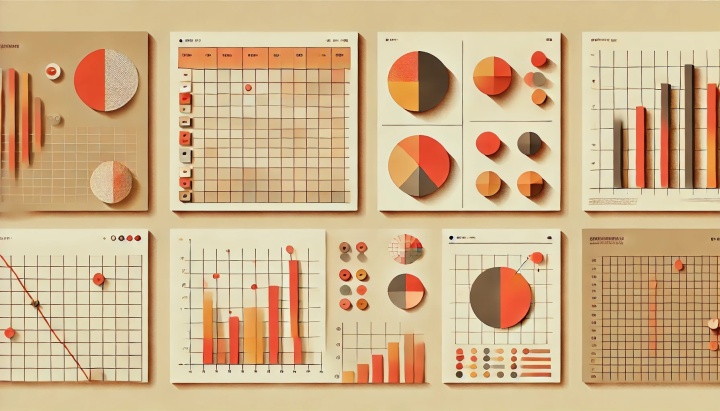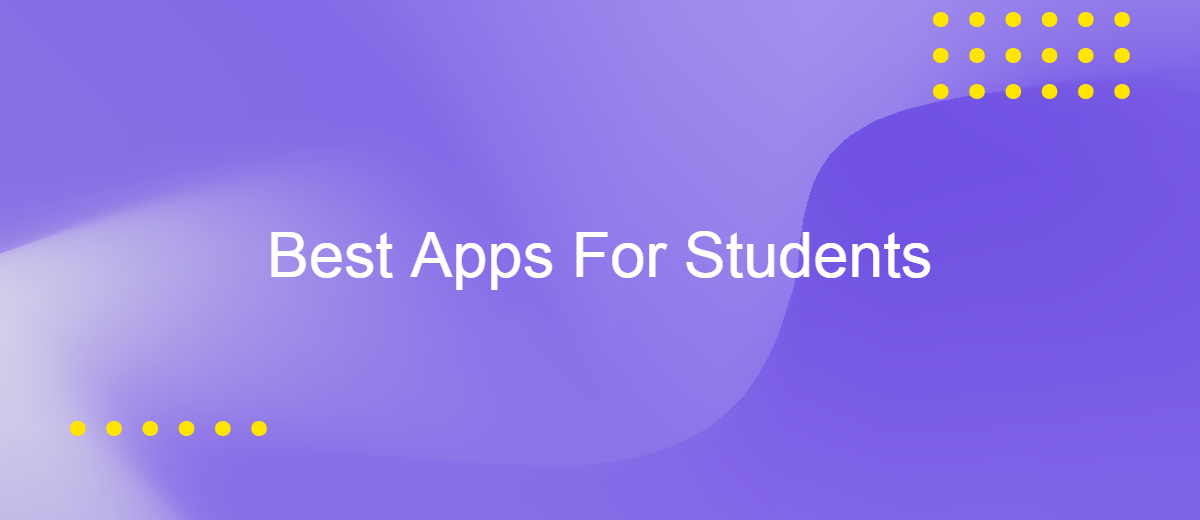The Best Educational Apps Every Student Needs for Research and Writing
It is impossible to imagine modern education without technology. Digital tools don’t just simplify the learning process — they transform it, making it more flexible, interactive, and accessible. According to research, 77% of organizations in the United States use e-learning for professional development. This approach is especially important in the education system.
Students are no longer limited to library shelves or handwritten notes. Today, a smartphone or laptop is enough to access millions of scientific articles, organize research, or hone writing skills. However, here lies the problem — getting lost among hundreds of applications is easy. Also, not all of them are really useful. Some are overloaded with features, others are too narrowly specialized, and others are simply inconvenient.
We offer the best educational apps that every student needs for research and writing. These are the most functional, convenient, and accessible tools for different purposes.
Apps for Organizing Research and Collecting Information

Working with academic materials is not just about reading and taking notes. It is important to be able to systematize sources, quickly find the necessary fragments of text, and correctly format citations. There are tools for this: Zotero, Evernote, and Mendeley.
Zotero is an indispensable assistant for those who work with a large number of sources. It is not just storage for books and articles, but an intelligent system that automatically extracts metadata (author, year of publication, publisher) and generates a bibliography in any required format — APA, MLA, Chicago, and others. What is especially valuable is that Zotero integrates with browsers: with one click, you can save a scientific article, news material, or even a website page. You no longer have to manually enter footnotes — the program will do it for you.
When it comes to structuring ideas, Evernote remains one of the most reliable solutions. Its strength is flexibility. You can create text notes, record voice comments, save screenshots, or even draw diagrams — all this will be synchronized between devices. Tags and powerful search, which finds text even inside images, are especially useful. For example, if you take a photo of a page from a book, Evernote will recognize the text and include it in search results. This is an ideal tool for those who prefer not to take notes linearly, but to freely accumulate ideas and then sort them.
For those who work primarily with PDFs and scientific articles, Mendeley offers a unique set of features. In addition to standard bibliography management, there is a convenient PDF reader with the ability to highlight text and add annotations. However, the main advantage is the built-in social network for researchers. This is especially useful for interdisciplinary projects, where it is necessary to keep up with the latest research in related fields.
Tools for Writing and Formatting Papers
Modern text editors have long gone beyond a simple set of letters. Today, these are intelligent systems that help not only write correctly but also build the logic of the text, comply with academic standards, and manage complex projects. The most popular remain: Grammarly, Overleaf, and Scrivener.
Grammarly goes far beyond the usual spell check. Algorithms based on artificial intelligence analyze the text at several levels: from basic grammatical errors to stylistic nuances and even the tone of the statement. The function becomes especially useful when working in English — the system detects the slightest deviations from the norms of academic writing, offering more precise wording. At the same time, Grammarly does not turn the text into a faceless template: you can always reject the recommendations if the author's style requires special expressive means.
When it comes to serious scientific publications with formulas, complex tables, and cross-references, ordinary text editors are often powerless. This is where Overleaf comes to the rescue — a cloud-based LaTeX editor that eliminates the need to manually enter markup commands. The system automatically formats the document according to the selected template (be it Elsevier requirements or dissertation council standards). Overleaf makes this powerful system accessible even to beginners: ready-made templates, a real preview, and the ability to collaborate turn publication preparation into an organized process, rather than a technical nightmare. If you are a beginner in writing articles, you can use the Paper Help service, which will write any work for you.
For large-scale projects — diploma theses, monographs, or a series of related articles — you need a tool that allows you to see the structure of the entire text as a single organism. Scrivener is created precisely for such tasks. The “corkboard” function is especially valuable, where each fragment is presented as a card with annotation — with the help of it, you can see logical breaks or repetitions in the narrative. And when it comes time for the final assembly, Scrivener exports everything into a single file, observing the specified formatting parameters.
Data and Analytics Apps

54% of students believe that fully online programs in higher education have improved access to education. Sure, it’s much more convenient to interact with data using technology. But the numbers themselves mean nothing without proper processing and visual presentation. This is where Excel, Google Sheets, Tableau Public, and Jupyter Notebook come to the rescue.
Excel and Google Sheets are no longer just spreadsheets. These tools offer amazingly powerful functionality for primary data processing — from basic arithmetic operations to complex statistical calculations. Their ability to visualize data is especially valuable. Google Sheets adds the benefits of cloud storage and real-time collaboration — ideal for group projects. Moreover, it can integrate additional functions for automation. You can set up integrations for Google Sheets to automatically transfer data from third-party systems to spreadsheets.
When you need to take data visualization to a professional level, Tableau Public becomes an indispensable assistant. This software allows you to create interactive dashboards and complex graphical representations that regular spreadsheet editors simply cannot handle. The main advantage of Tableau is its intuitive interface that does not require programming skills. You can drag and drop data fields, instantly getting different display options.
For serious analytical work, nothing can replace the Jupyter Notebook. It offers a unique environment where code, visualizations, and text explanations exist together, creating a “living” research document. Many modern scientific journals now accept papers created in this format, which makes it especially valuable for young researchers. However, to master it, you need to understand Python.
Collaboration and Presentation Tools
In academia, success often depends not only on personal knowledge, but also on the ability to work in a team, exchange ideas, and present results convincingly. For these purposes, Notion, Google Docs, Microsoft 365, and Canva are provided.
Notion is not just a note-taking platform, but an entire ecosystem for organizing knowledge. Its main advantage is flexibility. You can create a database for research materials, set up a board with tasks for a group project, or maintain a joint journal of ideas — all in one place. When several people are working on the same project, revision history and comments help track each participant's contribution without endless emails and calls. You can further expand the capabilities of this platform by implementing automation. This can be achieved by setting up Notion integrations with third-party systems.
When it comes to writing texts in a team, Google Docs and Microsoft 365 remain the de facto standard. Their strength lies in simplicity and instant synchronization. You can see your colleagues’ edits in real-time, discuss controversial points directly in the comments, and even track document versions to return to earlier versions. Microsoft 365 offers more advanced formatting features, which is important for complex academic papers, while Google Docs wins due to its accessibility and ease of sharing.
However, good research is not only about content but also about presentation. Canva turns the creation of presentations and infographics from a painful process into something intuitive and even enjoyable. Ready-made templates adapted to the academic style allow you to quickly draw slides without deep knowledge of design. Data visualization tools are especially useful — instead of dry tables, you can create vivid diagrams that your audience will remember. Video and photo editing tools on a smartphone can also be useful to make the presentation even more impressive.
Conclusion
In 2023, 93% of students reported using devices in the classroom. And it’s absolutely worth it, thanks to the tools they provide. Today, we’ve looked at the best educational apps every student needs for research and writing. Evaluate each one and choose the one that’s most convenient for you.
Do you want to achieve your goals in business, career and life faster and better? Do it with ApiX-Drive – a tool that will remove a significant part of the routine from workflows and free up additional time to achieve your goals. Test the capabilities of Apix-Drive for free – see for yourself the effectiveness of the tool.

